Michelangelo was an Italian sculptor, painter, architect, and poet, who is one of the greatest artists of the Italian Renaissance.
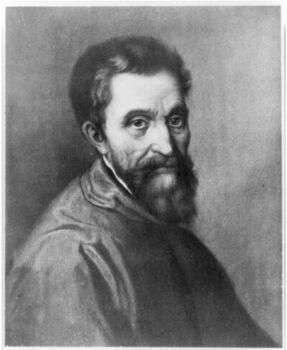
Image source: https://search.creativecommons.org/photos/671146e9-9a7b-46e2-a4dc-b4be2f3c6d13 by pingnews.com
About His Life
Michelangelo Buonarroti was born on March 6, 1475, in the family of a middle-class banker in Caprese, Italy. As a child, he became an apprentice artist and later studied in the sculpture gardens of the powerful Medici family. Michelangelo had a remarkable career as an artist and was recognized for his virtuosity as one of the greatest painters of the Italian Renaissance. Additionally, Michelangelo considered himself a Florentine artist, but he lived and worked most of his life in Rome, where he died in 1564 at the age of 88.
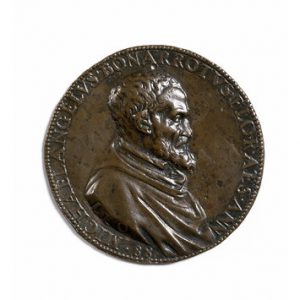
Image source: https://search.creativecommons.org/photos/741143bd-c620-419a-ab9b-b092c483838d by sailko
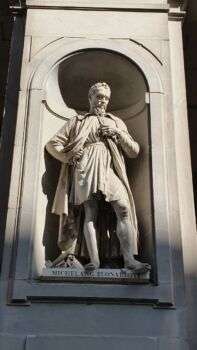
Image source: https://search.creativecommons.org/photos/2572fdd5-182b-4664-86b9-be80b2c7c08f by Yair Haklai
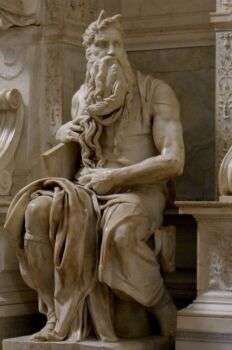
Image source: https://search.creativecommons.org/photos/a0363090-079e-474a-9207-4cc7bf206460 by Michelangelo
His Famous Marble Statues
- Bacchus: Completed around 1497, it depicts the Roman god of wine Bacchus which shows particular traces of the Hellenistic sculpture.
- Pietà (1499): Another masterpiece that depicts the Virgin Mary grieving over the body of Jesus who is lying on her lap after the Crucifixion.
- Madonna of Bruges (1504): Shows a somewhat detached Mary which looks away.
- David (1504): Showcases Michelangelo’s exceptional technical skill as well as his strength of symbolic imagination and establish him as one of the greatest sculptors of all time
- Moses (1505): Commissioned by Pope Julius II.
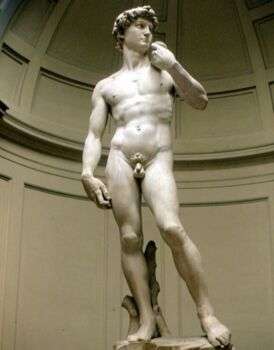
Image source: https://search.creativecommons.org/photos/ecf56a58-9b4d-4d4f-aa63-c8d5304d4e1f by roger4336

Image source: https://search.creativecommons.org/photos/8e2cc574-7483-487f-9b0f-8a740f45861b by dalbera
His Famous Paintings
Among Michelangelo’s paintings, his Vatican City Sistine Chapel frescoes stand out (1508-1512). The most important scenes of the Sistine Chapel are:
- Creation of Adam: painted on the ceiling and is a cornerstone of Renaissance art. The most famous fresco panel of the chapel
- Fall and Expulsion of Adam and Eve: painted on the ceiling and depict scenes from the book of Genesis.
- Last Judgement: painted on altar and depicts the Second Coming of Christ and the final and eternal judgment by God of all humanity.
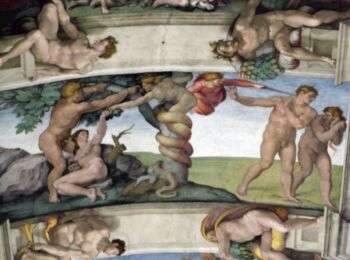
Image source: https://search.creativecommons.org/photos/d44cce98-ef4b-4f67-a0e4-6f8b2f7fbd96 by Randy OHC

Image source: https://search.creativecommons.org/photos/3e364035-e275-42f0-8eb7-25957da87e24 by archer10 (Dennis)
As an architect, he worked on St. Peter’s Basilica in Rome, between 1546 and 1564, where he removed the dispensaries and the facade of the tower. Additionally, he restored the Greek cross as well as a uniform order of the external columns. Michelangelo used the Corinthian order as a unifying theme, connecting pilasters at the bottom of the church and columns in the peristyle and lantern of the dome. Further, he designed a Florentine ribbed dome, instead of the Bramante hemisphere, dividing it into sixteen ribs instead of eight, and these ribs and the ribs of the dome are joined together. In addition, thanks to this solution, the whole church looks harmoniously and gives the impression of a monolith.
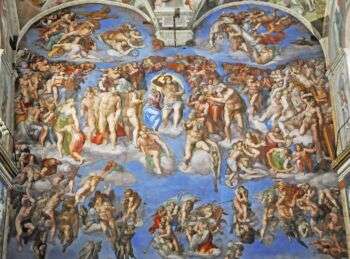
Image source: https://search.creativecommons.org/photos/f6ef0f39-4486-4336-a2ec-fc91c77b3709 by archer10 (Dennis)
Also, he worked on the Laurentian Library (1559) in Florence, where he designed the interior of the library itself, as well as its lobby. Further, he was the first to apply the Mannerist Style to the design of the library, which is one of Michelangelo’s most important architectural achievements. Then, the organization of space and constructive innovation in the library was revolutionary.
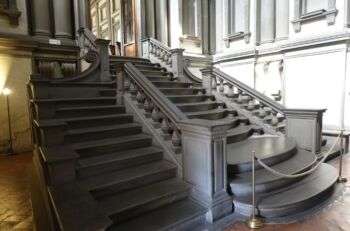
Image source: https://learnodo-newtonic.com
Michelangelo’s Style
- He preferred to paint frescoes than to work with oil colors.
- In his frescoes, he believed it was important to create figures with clear outlines, which was a Florentine tradition.
- He painted freely and with great dynamism, using bright, and clear colors that harmonized boldly.
- He mixed Greek and Roman mythology with traditional Christian scenes.
- He worked mainly with the human form, as he considered the body as the physical embodiment of the soul.
- Unlike da Vinci, he didn’t spend much time in contact with nature.
- He modeled in three-dimensional space, so also in his paintings, he emphasized the musculature of his figures.
- He was attentive to light and shadow, understanding that they can represent volume and form in both a sculpture and a painting.

Image source: https://search.creativecommons.org/photos/03535fa4-e9bf-4a5d-8f0b-44b62794a841 by Benjamín Núñez González
Info sources:
https://www.biography.com/people/michelangelo-9407628
http://www.geometriefluide.com/pagina.asp?cat=michelangelo&prod=bacco&l=en
https://www.britannica.com/art/fresco-painting
https://www.bibleodyssey.org/en/tools/image-gallery/e/eden-2
http://www.wga.hu/html_m/m/michelan/5archite/late/3spietr61.html
http://www.artble.com/artists/michelangelo/more_information/style_and_technique
http://www.michelangelo-gallery.com/michelangelo-architecture.aspx
